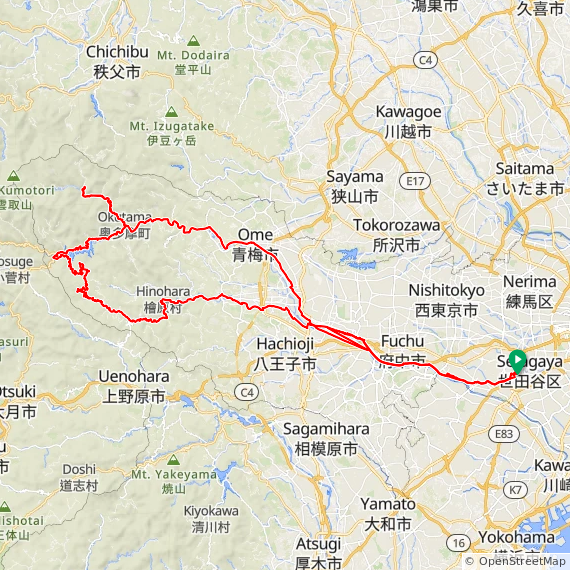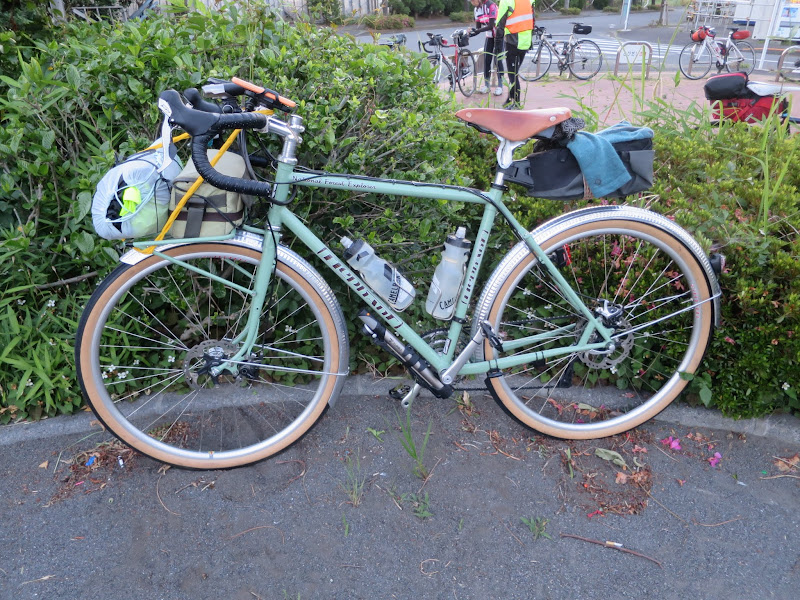
I’m back from my longest ride of the year, BRM604, a 600 km randonneuring event from Machida to Lake Suwa (Suwako) in Nagano and back. Had I successfully completed it under the 40 hour time limit I would have made Super Randonneur (SR), the feat of completing brevet distances of 200, 300, 400 and 600 km in one season. As it were I dropped out after the halfway point and cycled back to Tokyo at my own pace. The total came to 580 km with 4561 m of elevation gain. This makes June my 46th month in a row with at least one ride of 160 km or more.
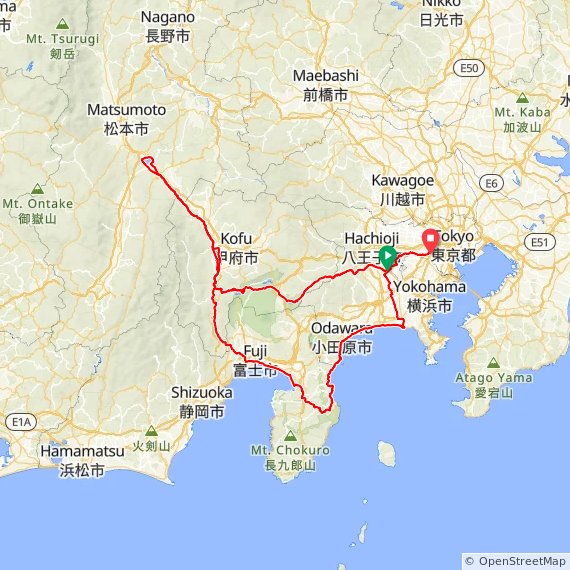

In 2013 AJ NishiTokyo organized a trial run for a new 600 km brevet course (2013BRMpre921) which I joined. You can read the report I wrote about it here. Not even having successfully completed a 400 km brevet at the time, it was not entirely surprising that I DNF’ed (Did Not Finish) that ride. The experience did not discourage me from trying again in 2014 (2014BRM621) and 2015 (2015BRM530).
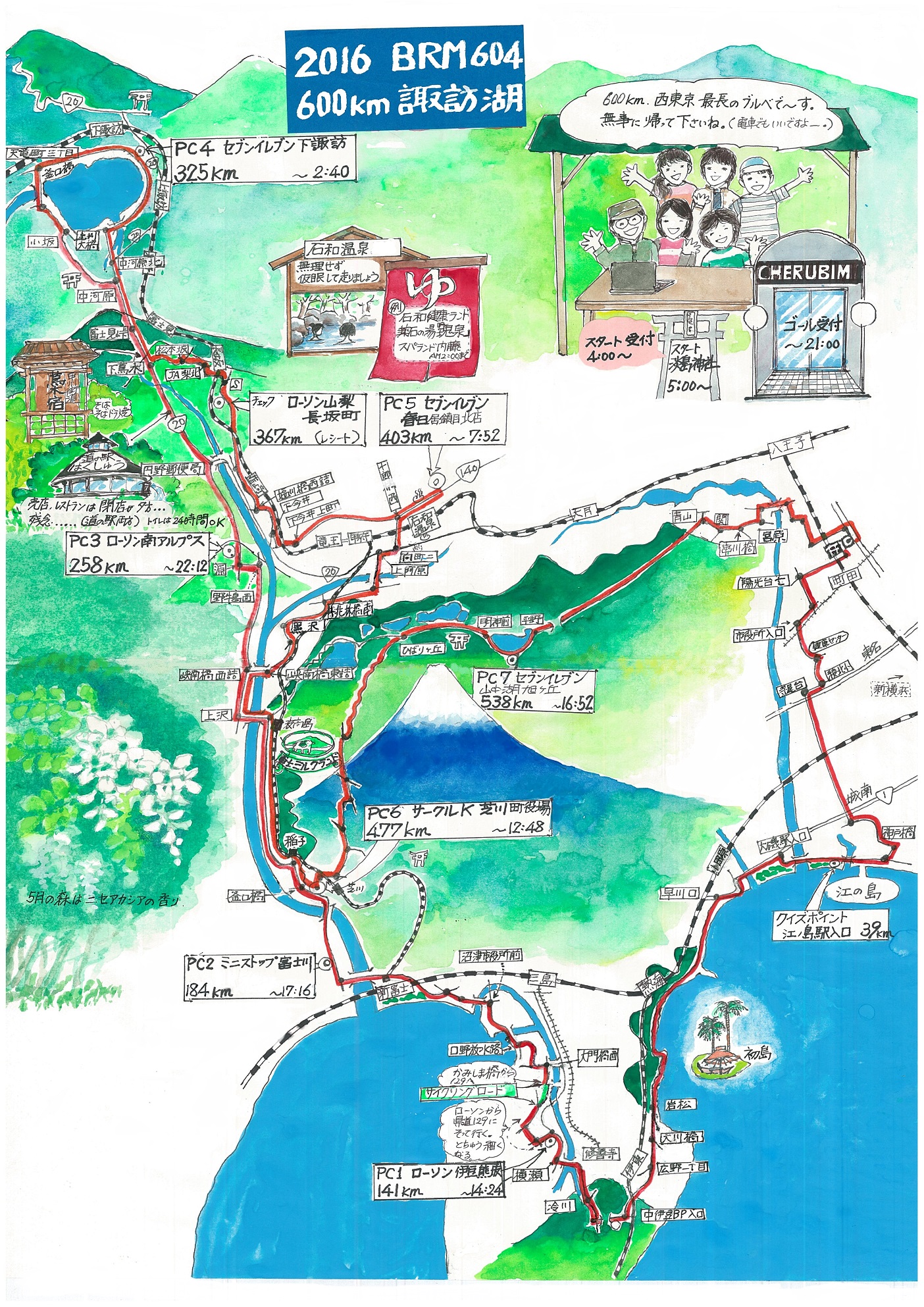
I did complete 400 km rides in both 2015 and 2016, the latter on my new Elephant NFE randonneur bike. With more experience I planned better this year, but in many ways the outcome was remarkably similar to that very first attempt.
On my first attempt my biggest problem was the huge spread in temperatures between daytime in Shizuoka and night time in Nagano. In 2014 I cycled a lot of the distance in the rain.
This year I prepared by wearing or carrying clothes for hot, cold and wet weather including shorts and trousers, short and long underwear, a wind breaker, a rain jacket and full fingered gloves.
I also addressed the sleep deprivation by getting as much sleep as possible upfront. I avoided staying up late several days before the event. On Friday I checked into a hotel in Sagamihara at 19:00, with lights out by 20:00 to get up at 03:00 for the 05:00 start from Machida. With all the extra clothes I found my bike quite heavy on the Onekansen climbs to Machida. My legs did not feel in shape. I finished my early convenience store dinner in my hotel room and went to bed as early as I could.



There were 38 people at the start. A couple more had signed up but chose not to start, perhaps due to the weather forecast, which included a high chance of rain on the second day. This is already the tsuyu season (rainy season), with hydrangeas in full bloom everywhere.
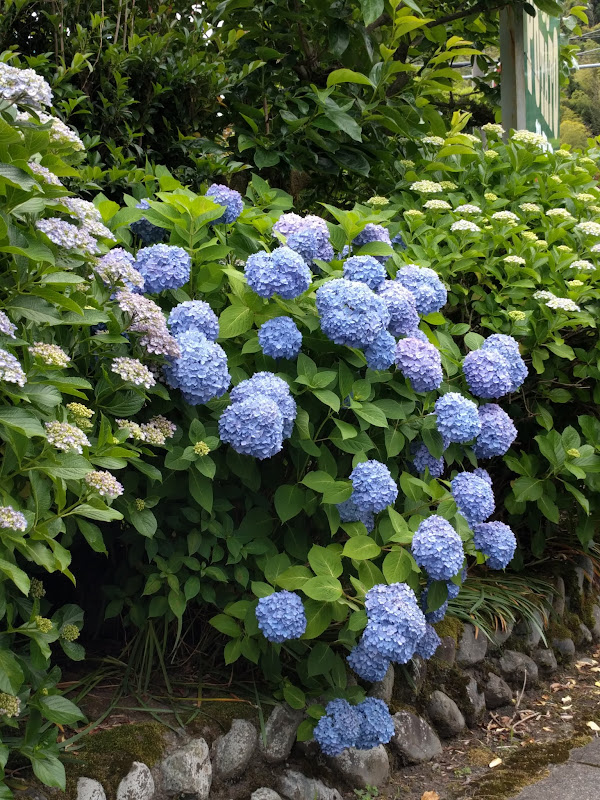
On the way to Enoshima, most participants already passed me. I was the last but one participant to get his brevet card signed at the untimed check point in Enoshima. I reasoned that at a 600 km brevet perhaps the mix is biased more towards the stronger sort of rider than it is at shorter distances.
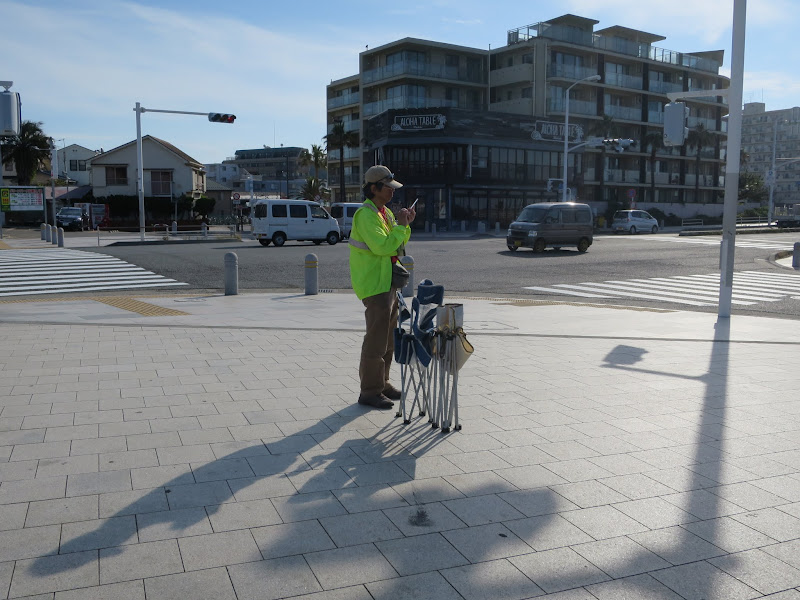
Unlike at the 300 km Mt Fuji brevet in March that takes the same route as far as Odawara I had very little chance of drafting anyone on the flattish first part. Still, I was over an hour ahead of schedule by then, based on the 15 km/h average used for checkpoint closing times. I took very few pictures and did not even stop for gorgeous Fuji views all the way from Enoshima to Odawara, as I wanted to put as much time as possible into the “time bank”. I knew I would need it for the big climbs and for having any chance at sleep later in the ride.

The weather started out clear and sunny, getting pretty warm early on. Not until the afternoon did it get overcast and a bit cooler. I ended up drinking plenty of water throughout the ride, both when it was hot and later when temperatures dropped.
Once the coastal road started getting hilly as we crossed into Izu I could not really extend my time savings much, but at least the heat did not wear me out and I felt better than on the ride out to Machida the night before. I enjoyed the fast descent towards Shuzenji after the pass on Rt12 from the coast at Ito. Descending was definitely a strength for the Elephant NFE, as its wide 650B tyres float over uneven roads. At PC1, a Lawson conbini 141 km from the start I was about 1:15 ahead of the cutoff time, which is not a great amount, but not terrible either.

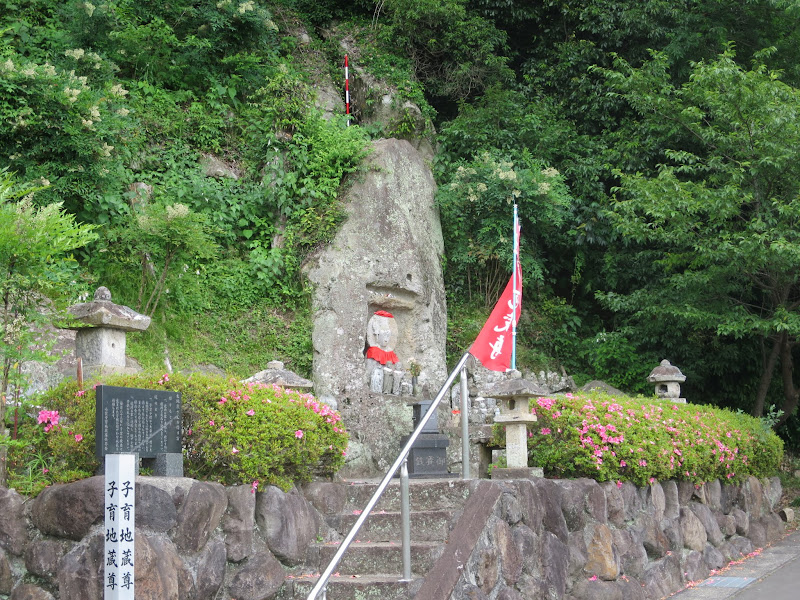
From here to PC2, a Ministop conbini in Fujikawa 184 km from the start, the road was mostly flat so I was hoping to increase my time buffer. From Mishima to Fuji city the road is urban. The sky had become overcast and Mt Fuji was fully obscured by dense clouds. I was counting down distance to the river crossing, where the route turns away from the coast and becomes rural again. By PC2 my time buffer had only increased to about 1:20.

The next check point was 74 km after that was PC3, a Lawson in Minami Alps. The route became hilly, following the Minobu railway line before joining Rt52 and other flat roads again. It was more or less the same as the 400 km brevet, except clockwise around Mt Fuji instead of counterclockwise.
![]()
Evening approached in Yamanashi and with it a slow drizzle started. I put on my wind breaker and continued.
Between Izu and PC3 I only came across two other cyclists still on the same part of the course, meeting or leapfrogging each other at conbini stops.

When I rolled up to PC3 after 22:00, I was down to a single hour spare before cutoff time. The summit near Fujimi before Suwako was about 40 km away, almost all of it uphill.
Standing outside the Lawson in the rain, I made a phone call to the organiser, Mr H. at PC4 at Suwako. I told him where I was and how little time buffer I had left. I figured I might not make it to PC4 by the cut-off time and did not want to keep him waiting there, but he reassured me he would wait until the closing time and I should go for it.
I changed into my long underwear, winter trousers and rain jacket and headed towards Suwako. With the minimal time buffer, even if I made the next PC, I wouldn’t have much time to sleep before the next PCs. I figured I needed to be at PC6 at least 2 hours before closing time. From there it was a 30 km climb to a pass above Lake Motosu (Motosuko), which was the part I least liked about the 300 km AJ NishiTokyo brevet. Without that time buffer I couldn’t make it to PC7 at Yamanakako. So realistically, there was no chance I would complete the 600 and make SR this year. But I could still go for it and do better near Suwako than I had done the first time, to avenge my defeat by the cold temperatures then.
By this time the roads were pretty deserted, except for the occasional truck roaring past. The rain was pretty steady. The temperature was down to 13° C. Getting closer to Fujimi, I came across cyclists heading the other way, already past the halfway point and we waved or shouted encouragement at each other.
I arrived at PC4 with half an hour spare. Mr H. was sitting outside with one other cyclist. I bought food and drinks and got my receipt, then sat with them and talked. I said I was going to head on to PC5, which I had never made it to before. After the rest, Mr H. started packing up his chairs while the other cyclist and I headed back on the road.
It was now over 23 hours since I had got up and the need to get some sleep was starting to catch up with me. I did better sleep-wise than at any previous attempt, but once I climbed to Fujimi toge it became pretty clear I needed a nap. I couldn’t find any conbini with a cafe corner with chairs inside, so I stretched out right in front of another one in the parking lot, still sheltered by the roof of the building, with my spare clothes bag as a pillow. When I woke up again I felt better and headed on.
I then decided to give up PC5 and head back to Tokyo the same way I had done in 2013. Without a train option, my return would extend into Monday morning anyway, so it made sense to keep the route as direct as possible.

From Fujimi to Minami Alps the route was almost exclusively downhill. My TRP Spyre disk brakes with sintered pads were effective in the rain but boy, are they noisy when wet! I hope I didn’t wake up any sleeping locals.

For the first time on any of my rides that passed through Minami Alps city I could not see Mt Fuji from the Yamanashi side — it was too cloudy.


As I headed south on Rt52 (Minobu michi) the views were very atmospheric: Low clouds on the mountains and steam rising from the forests.


I crossed the Fujikawa bridge for Rt9. The road heads up a rural valley, then climbs to a tunnel over to the adjacent valley to join Rt300 (Motosu michi).
The rain appeared to stop and I swapped my rain jacket for the wind breaker, but it soon resumed again.
By then sitting on the saddle got painful, as my bottom felt pretty sore now. Throughout the ride I had stood up as much as possible to give it some relief, but it didn’t help much.
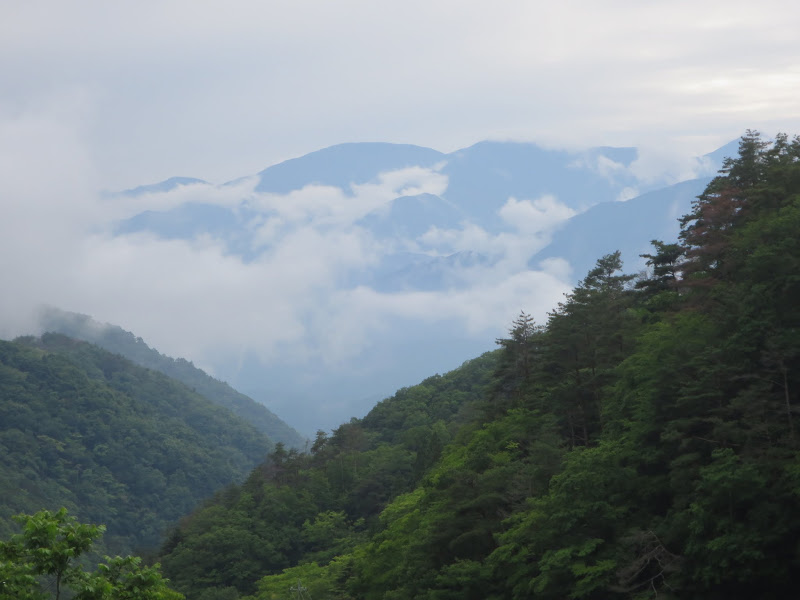

I also got sleepy again. Not quite halfway up the 650 m elevation gain from the base of the climb I decided to take another nap. I picked a small spot only about a meter from the road, where the guard rails formed an angle away from the road. A car would basically have to be crashing through them to hit me here. Again the spare clothes bag formed an excellent pillow.

The higher I climbed, the better the views got and the rain did eventually stop. I made a lot less progress than I had anticipated, especially with the nap, but I felt much better for it. Without any time limits I could take my time for pictures and to enjoy the views. I had enough bananas and water. If it wasn’t for my difficulty of sitting, it would have been great.

Finally I got to the tunnel that took me over to the lake shore. As I exited it, a stunning view of almost cloudless, almost snow free Mt Fuji behind Motosuko awaited me. I stopped for pictures. This is the scenic view depicted on the 1000 yen banknote, except that by June Mt Fuji has less snow on it than on that image.
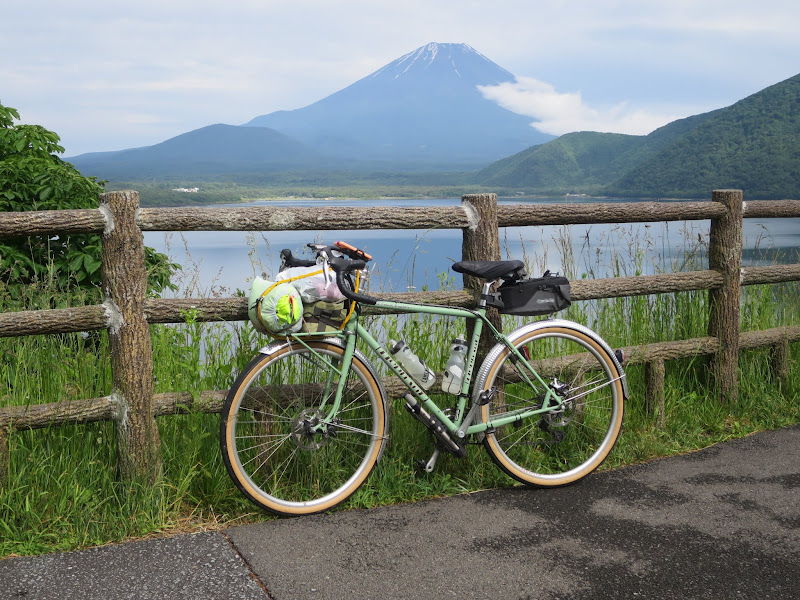
The road along the lake shore took me back to the main road to Kawaguchiko and Fujiyoshida, Rt139. On the climb I had already noted some difficulties cleating in with my right shoe. Not long after I got on Rt139 I encountered the opposite problem: I couldn’t disengage the foot from the SPD pedal. In the end I had to slip out of the shoe and then stood by the road side in my sock, inspecting the pedal mechanism. It turned out that one of the two bolts attaching the cleat to the sole of the shoe had come undone. Consequently the cleat stayed locked to the pedal even when the shoe was twisted sideways to disengage it. Fortunately the loose bolt had not dropped out yet, as the cleat mechanism of the pedal still held it in place. I got out my Allen keys, undid the other bolt and checked out all the parts. Then I put both bolts in place again, carefully matching the layout on my left shoe, whose bolt tension I also checked. After that I could ride on without problems.
Near Kawaguchiko I met Sebastian, a cyclotourist from Chile who had been riding from Fukuoka in Kyushu towards Tokyo. He greatly enjoyed his cycling experience in Japan. He was going to stay at a camp site near Mt Fuji for the night before heading on towards Tokyo the next day. We discussed routes and cycling in general in Japan.
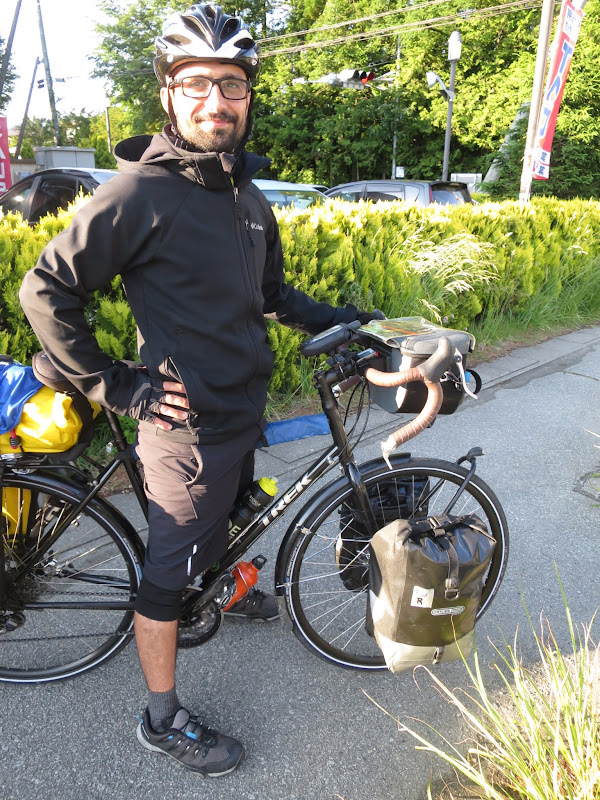
The major roads around Kawaguchiko are in a notoriously bad state, but to my surprise I found that one major section heading into town had recently been renovated with smooth new asphalt. Hopefully the other direction and other parts will follow soon.
Maybe it was due to the rain in the morning, but instead of the bad traffic jams around Rt139 that I’m used to, the roads were virtually empty — unheard of on a Sunday afternoon. I think traffic was the most quiet of any of my trips around the Fuji Five Lakes area. It was really enjoyable. Oh, and those Mt Fuji views! It only got better 🙂
After the climb from Fujiyoshida towards Yamanakako I could coast downhill a bit. At the traffic light on the lake shore I crossed over to the cycling path that runs around the east side of the lake. The sky was blue, Mt Fuji sat there in the evening light like on a picture postcard, the air was fresh and I had the cycling path virtually to myself. It was like the heavens were trying to make up for soaking us with rain the night before and the morning.
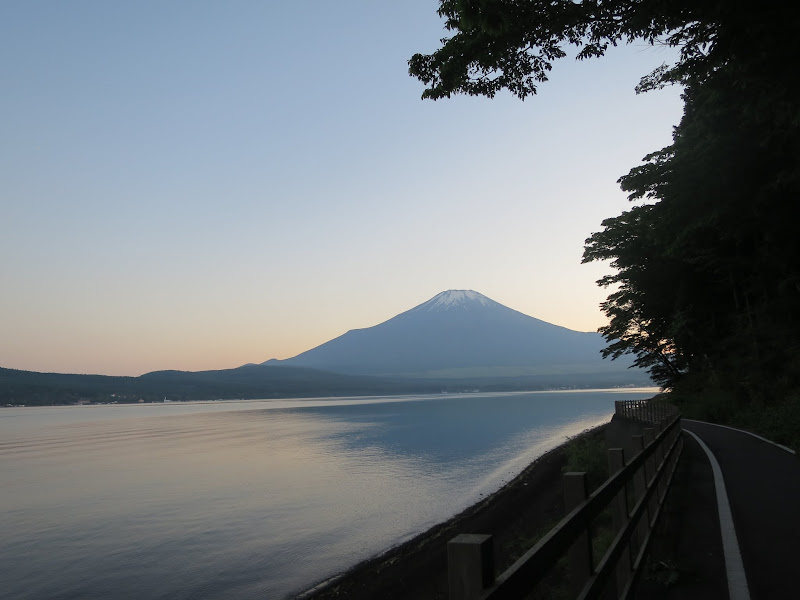
I cycled to the convenience store next to the turnoff for Rt413 (Doshi michi) and took a break there. I enjoyed some coffee and warm food, then changed into warmer clothes again for the night ride on Doshi michi. The pass to Doshi was actually at the highest elevation of the entire course.
The climb from the lake to the pass felt steep as I got closer to the top, but it’s relatively short. After that comes a long fast descent to Doshi village and beyond. Again I felt very confident with the NFE’s tyres and brakes.
Beyond Doshi the road keeps going up and down, so I had to work again. During the daytime the nice views of the mountain valley will distract you, so somehow at night the road feels steeper and comes across as more work to ride on. Eventually I crossed from Yamanashi into Kanagawa prefecture and into Sagamihara.
Near the Rt76 intersection I again stopped for some sleep. I lay down for almost an hour. When I woke up again, I felt pretty disoriented, almost as bad as on that first 600 km ride. I felt like I was in a dream and had to force myself to accept that, no, this was reality. I couldn’t just go back to sleep and wake up at home — I was really out here in the mountains where it was cold and night time and I really had to cycle every single meter home to Setagaya before I could sleep in a warm bed.
Another thing the sleep deprivation does to me is that the “people detector”, the part of our brain that helps us pick out humans and their faces from all kinds of surroundings (something developed by evolution to help us survive in dangerous environments), seemed turned up to high gain or had its “false positive” filter turned off. Many a tree by the roadside started to look like a person standing there. It was really weird, but not the first time I experienced that.
At least that wasn’t dangerous and it didn’t scare me. On the other hand I was pretty determined that, should I get sleepy again I would not struggle on drowsy and risk falling asleep on the bike. I would stop wherever necessary and sleep some more. As it turned out I could make it home all the way to Tokyo with that Sagamihara nap.
It was a little after 04:00 on Monday morning when I finally reached my front door. The birds were already singing and it was only half an hour to sunrise, some 48 hours after I had arrived at the start for the registration desk and the safety briefing before the ride.
I took my bags off the bike, changed out of my cycling clothes, took a shower and went to bed. I did not get up again until 7 hours later, at noon 🙂
What worked and what didn’t
I had very few issues with my equipment. There wasn’t anything I was really missing, though some items could have been replaced with something more suited to the job.
My camera, my phones, navigation using a GPX breadcrumb trail on the Navi2Coach and Google MyMaps on the phone, charging my device on the ride — all these things worked flawlessly like on other rides before.
I had no issues with the tubeless setup of the Compass Babyshoe Pass tyres. I just added a bit of air on the second day (the third day since I left home), over 400 km into the ride.
My feeding routine worked too – about half my calories came from bananas, the rest split between liquid food (cocoa, sweetened milk tea) and various breads. I brought along figs, raisins and nuts and finished all of those.
I have a Swift Ozette XL randonneuring bag on order, which is supposed to arrive later this month. With that I wouldn’t have to split items between my small front bag, a clothes sack and a drawstring rucksack I mostly kept on top of the front bag. Chances are, I also wouldn’t have dropped my wallet on the road once (I quickly retrieved it) or have dropped a bunch of bananas another time (ditto). The Ozette XL will be very welcome.
The cleat failure on my Shimano SH-M088LE shoes could have been prevented with maintenance, but honest – who ever checks bolt tension on cycling shoes? Well, not me at least. The left shoe is gradually tearing up, perhaps as a late result of damage suffered in a crash last November. In any case it looks like I’ll have to order a new pair soon, after something like two years and 20,000 km.
The flaky performance of the Wahoo speed and cadence sensor on this ride came as a disappointment. I’ve already taken it off the bike and instead installed the Garmin magnetless speed and cadence sensor set, which has been getting good reviews. This was one of the cases where trying to save money ended up costing even more money.
I didn’t use to have problems with my Brooks saddles, but I do now. Neither the current saddle on my Bike Friday nor on my NFE works as well as the first Brooks I had. I don’t know if it’s me getting older or if the saddles have changed, but we don’t get along as well as we used to.
The rain wear bag that I used to hold other spare clothes besides the rain wear itself turned out not to be rain proof. Duh, stupid me for making that assumption! Next time I’ll wrap my warm trousers into a separate bag, if I carry it like that. Riding in damp clothes made the night time ride a bit chillier. I’m happy with my Polaris rain jacket, but still looking for better rain trousers and some covers to keep my shoes drier. I could also do with a mudflap on the front mudguard to reduce water splashing onto the shoes when I ride through puddles.
My Honjo Turtle 58 mudguards worked OK, but the clearance is very tight on the front wheel. I’m still not 100% happy about that. I may still switch to something wider.
Things I could do with near my stem (but the Ozette may partly take care of that):
1) A battery holder for recharging the GPS and phone with a short cable. Keeping the battery in the front bag worked but required careful positioning of the battery to make the cable reach where it needed to.
2) A rainproof camera holder to make it quick to take pictures. I used two small pockets inside the front back, but it took a bit too much fiddling to reach for the camera and the Nexus 6P phone for pictures.
3) Some kind of food holder (for bananas, trail mix, etc) on the handlebar.
Not ready for Paris-Brest-Paris yet!
Having struggled even with 300 km brevets, being able to finish a 400 km one last year was kind of unexpected. But this year I was able to repeat that feat, completing 3 out of 4 events necessary for SR status, or for qualifying for Paris-Prest-Paris in 2019 (if I do the 200-300-400-600 then).
Right now, finishing a 600 under the time limit seems as remote from finishing a 400 as the 400 looked after finishing a 200 km years ago. I reckon I would have to somehow make it to Suwako at least two hours earlier to have any chance of finishing the event. That means I’d have to ride about 2 km/h faster on average through the first half of event, and the difference would have to be even greater in the second half compared to my post-DNF ride home. How likely is that? It doesn’t sound totally impossible, but it is still a big step.
Ultimately, I know I enjoy untimed events more than brevets, with the chance to take pictures, to enjoy different kinds of food, with leisure to talk to people you meet on the road.
But brevets also add a challenge and are a chance to meet other cyclists with different levels of experience. They take me further away from Tokyo.
Being able to participate in PBP is gradually becoming a bucket list idea for me, something unique I would like to try once in a lifetime, just like this 600 km is something crazy I only do once a year. Though partly through the ride I swore to myself I wouldn’t do this again, I am sure I will be back again next year and give it a good try again.

